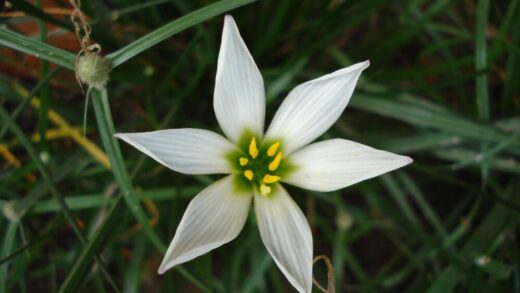Light requirements of the tulip

The interplay between a plant and the sun is one of the most fundamental relationships in a garden, and for tulips, it is a critical factor that dictates their strength, vibrancy, and longevity. While tulips are famed for heralding the arrival of spring, their success is heavily dependent on the amount and quality of light they receive during their relatively short growing season. Providing the right light conditions is not just about ensuring a beautiful bloom in the current year; it is also essential for the process that allows the bulb to store enough energy to flower again in the future. This article will illuminate the specific light requirements of tulips, guiding you on how to select the perfect location to help them flourish.
Tulips are classic sun-loving plants, and for the best performance, they should be planted in a location that receives full sun. In horticultural terms, “full sun” is defined as an area that gets at least six hours of direct, unfiltered sunlight per day. This exposure is most critical during their active growing period in the spring, from the time the leaves emerge until they begin to yellow after the flowers have faded. Abundant sunlight fuels the process of photosynthesis, which is how the plant converts light energy into the chemical energy (sugars) needed for growth, flowering, and, most importantly, recharging the bulb for the next season.
The benefits of planting tulips in a full-sun location are numerous and clearly visible. Plants that receive adequate sunlight will have stronger, sturdier stems that are better able to support the weight of the flowers, making them less likely to bend or flop over. The colors of the blooms will also be richer, deeper, and more vibrant. Furthermore, strong sun exposure helps the foliage to dry more quickly after rain or morning dew, which can reduce the incidence of fungal diseases like Tulip Fire that thrive in damp conditions. A sunny spot is unequivocally the ideal environment for a healthy and spectacular tulip display.
While full sun is the gold standard, tulips can tolerate a degree of partial shade, particularly in hotter climates where the afternoon sun can be very intense. In these regions, a location that receives morning sun and some afternoon shade can actually be beneficial, as it can help to prolong the life of the flowers by protecting them from the stress of excessive heat. However, if tulips are grown in too much shade (less than four hours of direct sun per day), you will likely notice a significant decline in their performance. It is a matter of finding the right balance for your specific climate.
One of the strategic advantages of tulips is that they complete most of their active growth cycle early in the spring, before many deciduous trees have fully leafed out. This means that you can often successfully plant tulips underneath trees that will later cast dense shade in the summer. During the crucial spring growing period, the area may receive plenty of sunlight, allowing the tulips to thrive. By the time the tree canopy fills in and creates shady conditions, the tulips will have finished flowering and will be well into their energy-storage phase, making this a clever way to add spring color to a woodland garden setting.
More articles on this topic
The effects of insufficient light
When tulips do not receive enough sunlight, they exhibit several tell-tale signs of stress. One of the most common symptoms is etiolation, which is the plant’s attempt to stretch towards a light source. This results in abnormally long, weak, and spindly stems that are often pale green or yellowish in color. These weakened stems are unable to properly support the flower heads, causing them to droop or break easily, which significantly detracts from the beauty of the display.
Insufficient light also has a direct impact on the quality and quantity of the flowers. The blooms will likely be smaller than those on plants grown in full sun, and their colors may appear washed out or less intense. In very shady conditions, the bulbs may not gather enough energy to produce a flower at all, a condition known as “blindness,” where the plant produces only leaves. This is a clear indication that the location is not providing the necessary light levels for the plant to complete its reproductive cycle.
Perhaps the most significant long-term consequence of inadequate light is the failure of the bulbs to perennialize, meaning they do not come back and bloom in subsequent years. The post-flowering period is when the leaves work to create and store food reserves in the bulb for the next season. If the plant is in a shady location, the rate of photosynthesis is greatly reduced, and the bulb is unable to accumulate enough energy to survive its summer dormancy and fuel the growth of a new flower. This is why tulips planted in shady spots often perform well the first year (using the energy stored by the grower) but fail to return.
Therefore, when you are observing poor performance from your tulips—weak stems, pale colors, or a failure to re-bloom—one of the very first factors you should assess is their light exposure. Observe the potential planting area at different times of the day to get an accurate sense of how many hours of direct sun it truly receives. Sometimes, a nearby structure or tree can cast more shade than you initially realize. If you find that a lack of light is the problem, the only effective solution is to transplant the bulbs to a sunnier location in the garden during their dormant season in the late summer or autumn.
More articles on this topic
Light requirements during dormancy
Once the tulip foliage has completely yellowed and withered, the bulb enters its summer dormancy period. During this phase, the bulb is essentially resting and is not actively photosynthesizing. Consequently, the light conditions during the summer are largely irrelevant to the health of the bulb itself. This is the biological characteristic that allows for the successful planting of tulips under deciduous trees, as the dense summer shade cast by the leaf canopy does not harm the dormant bulbs underground.
While sunlight is not needed during dormancy, soil temperature and moisture levels are still important. The summer shade provided by a tree canopy can actually be beneficial, as it helps to keep the soil cooler and prevents it from drying out excessively. Tulips generally prefer to be kept relatively dry during their dormancy to avoid rot, but in very hot, baked soil, they can become stressed. The dappled shade of a summer canopy can create a more moderate soil environment that is quite conducive to the bulbs’ resting phase.
This lack of a need for summer sun opens up many creative companion planting possibilities. You can design your garden beds so that as the tulip foliage begins to fade, summer-blooming perennials or annuals are just beginning to grow and fill in the space. Plants like hostas, ferns, coral bells, or daylilies are excellent companions for tulips. Their emerging foliage can help to camouflage the dying tulip leaves, and they will then thrive in the same spot throughout the summer, with their light requirements being met after the tulips have finished their cycle.
Ultimately, the key takeaway is to focus on the light conditions during the spring. The success of your tulips is determined by the sunlight they receive from the moment their leaves emerge until those leaves die back naturally. The light conditions for the rest of the year have little to no impact on the bulbs’ performance. By prioritizing a location that provides at least six hours of direct sun during this critical spring window, you will be providing the most important environmental factor for growing strong, beautiful, and lasting tulips.


















